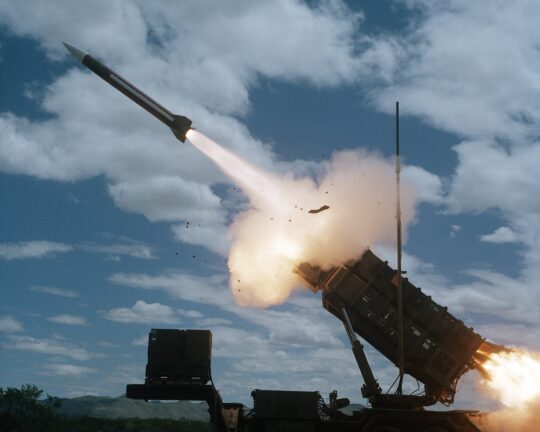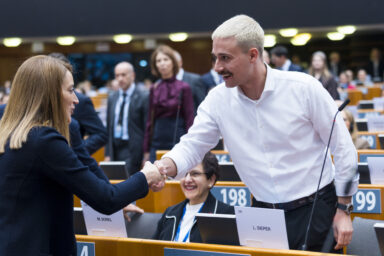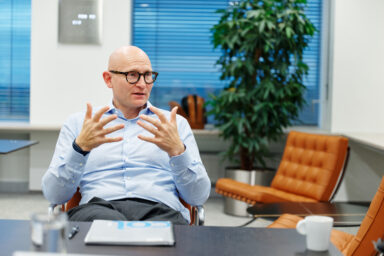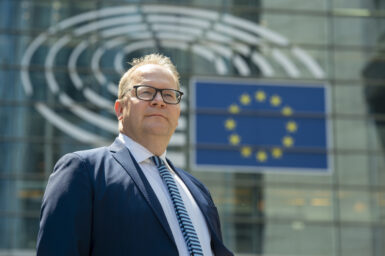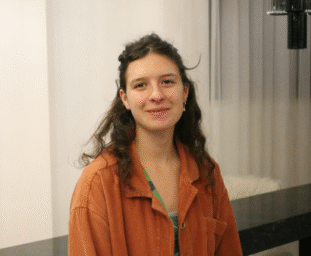Launched jointly by Ukraine and the European Union, BraveTech EU marks the first-ever alliance of its kind in defence technology. With an initial investment of €100m – split evenly between the European Commission and the Ukrainian government – the initiative signals a significant step forward in Kyiv-Brussels cooperation, merging innovation, production, and strategic security into a single shared platform.
Over the past three and a half years, Ukraine has built from scratch a defence tech ecosystem that is now unmatched in Europe. The numbers, according to Mykhailo Fedorov, Ukraine’s First Deputy Prime Minister and Minister of Digital Transformation, speak for themselves: from just seven drone companies in 2022, the sector has grown to over 500, with annual production exceeding four million units. The electronic warfare sector grew from 10 to more than 300 companies, while over 200 firms are now developing unmanned ground vehicles (UGVs) and more than 10 are focused on naval drones.
“This is not just a technological partnership – it’s a strategic investment in our shared security,” Mykhailo Fedorov, Ukraine’s First Deputy Prime Minister and Minister of Digital Transformation
“This growth isn’t random – it’s the outcome of targeted public policies that promoted entrepreneurship, operational speed, and real-time experimentation,” Mr Fedorov told EU Perspectives.
The EU side is aware about this aspect. “In Ukraine, speed is vital. Every delay can cost lives. Europe’s processes risk being too slow and bureaucratic. We need to prioritise practical collaboration – not just funding, but fast, scalable development,” said Andrius Kubilius, European Commissioner for Defence and Space, speaking at the Ukraine Recovery Conference in Rome.
A strategic alliance for Europe
BraveTech EU is more than just a tech collaboration because it’s a strategic move for joint security. The EU will gain access to battlefield-tested innovations, ranging from AI to electronic warfare tools. Ukrainian companies will benefit from funding, industrial know-how, and integration into EU programmes.
The platform aims to build a unified defence tech market between the EU and Ukraine, fostering joint development and rapid scalability of high-impact solutions.
You might be interested
“The EU gets access to tech that’s been battle-tested. Our drones and EW systems are often faster, cheaper, and more adaptable than their Western counterparts,” the Kyiv digital boss said. “But this isn’t about competition – it’s precisely that efficiency that makes cooperation all the more urgent.”
Despite its great potential, project leaders warn of a real risk. European bureaucracy could slow down the decision-making pace that wartime demands. “Every delay costs lives. We need less red tape and more real collaboration -based on rapid, scalable development,” Mr Fedorov said.
Testing and joint development
Alongside BraveTech EU, Ukraine has also launched the Test in Ukraine platform. It allows international developers of UAVs, UGVs, naval drones, electronic warfare systems and AI-based tools to test their technologies in real combat conditions. The aim is clear: speed up the adoption and production of technologies that could prove decisive on the battlefield.
Among the first European companies involved is Germany’s DIEHL, known for its IRIS-T air defence systems. The company recently tested a UGV in Ukraine under the Brave1 initiative.
This autumn will mark the start of the programme’s first operational phase. Defence hackathons will take place, matchmaking events with investors, R&D funding, and testing of European products in Ukraine. In 2026, phase two is to scale the most promising solutions. It includes providing access to EUDIS accelerators and the European Defence Fund.
“The EU must not only learn how to build drones and advanced technologies – it must also create a completely new ecosystem for defence innovation,” Mr Kubilius said, stressing the need to combine Ukraine’s speed with European industrial expertise.

